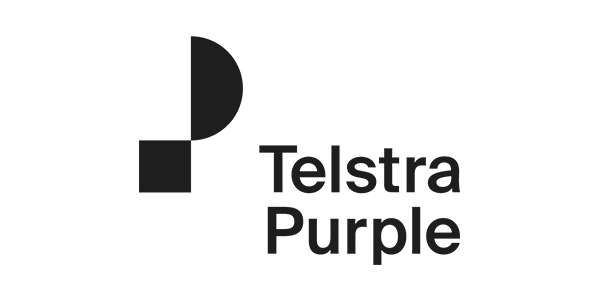Is it time to re-think the retainer?
Retainers are the most common form of engagement in PR and rightly so. But are they the most efficient?
Retainers enable agencies to predict workloads, budget, plan campaigns and provide a consistency for the client, whilst keeping accounting simple. The retainer typically revolves around an agreed flat monthly fee.
Retainer work is usually measured and managed by tracking billable hours, divvied up among the team in much the same way law firms operate. The more senior the staff are on your account, the greater their hourly rate. A profitable account is one where the time/resources spent on the account is less that the time/resources estimated at the beginning of the contract. All well and good if you regularly appear in the FT or Techcrunch -then you probably think you are paying for results.
The problem is this model doesn’t work for all tech firms and it isn’t always the best value.
Here’s why: the technology industry comprises all shapes and sizes of companies, many of whom make or develop very complicated products with a limited audience, perhaps in the thousands (i.e. not billions). The traditional media that caters for these niches can be small, perhaps two or three per sector. Some openings are vacant, some are overcrowded with dozens of overlapping publications, blogs, events and awards.
If the relevant media in your sector amounts to 10 journalists and 3 publications, it is unlikely that you need or want to spend £5000 on a monthly retainer featuring a press office and four account executives. You probably don’t want a day spent each month on an inactivity report nor do you want to splash out on press launches in the extended holiday season of mid-June to August.
And yet, the traditional PR model asks you to pay for time and activities you are not going to need or want.
Further, as a smaller tech firm, you may have a limited marketing spend which is almost eaten up by the PR retainer, with little left over for creating and implementing social media, digital or email campaigns. And yet all these marketing activities need attending to so your only option is to ask your PR agency to take on extra responsibilities: write the exec blogs, create an email campaign, look after the website. This will inevitably require extra budget to be done efficiently. And here we are assuming that your PR agency actually has proficient digital skills.
If your agency employs a tech writer that really understands your sector, can create beautiful infographics, design web site information architectures (IAs) or plan lead-generation email campaigns, you are in luck. If they don’t, you are asking your interior decorator to build you a kitchen extension.
Diverse agencies, on-demand – including PR
The alternative is to have a number of agencies, all with specialist marketing skills, paid on a project-basis and therefore not hogging your entire budget. Project-based pricing works for content agencies, digital agencies, design agencies – so why can’t PR be engaged in the same way?
Big tech firms with large marketing teams at their disposal can manage multiple different agencies. The PR manager manages the PR agency, the social media manager looks after the social agency and so on. If you work for a smaller tech firm with an even smaller marketing department, managing multiple agencies on a piecemeal budget is a real challenge. Each one needs to be brought up to speed on new campaigns, change of brand, company pivot and so on. Despite the project-based fees, you can still easily overspend because of the overlap and duplication.
So what am I advocating?
I believe many small tech firms would benefit from an integrated agency which knows their vertical sector (the technology and the audience) , but can also work horizontally across the marketing channels such as PR, marcomms, digital and design.
And it isn’t all about agency size either. You may not get the best value at large integrated agencies (or much integration for that matter).
A smaller integrated agency can be more personal, interactive and hands on. You get to work with different marketing specialists coordinated through your account manager. By being an extension of your own marketing department, this style of agency can orchestrate campaigns over multiple channels without duplication and delay. Furthermore, the pricing can be project-based across all of the activities.
How does this work? At the beginning of the year, you work with your agency to create a year-long marketing and communications plan that supports both sales and brand marketing. Together, you estimate projects around the spikes – perhaps during event season – and for general background noise. So you use your budget when you need it. Next, you agree a budget for all marketing activities which can be flexible as you go. Perhaps allocate one over-arching purchase order per quarter. For each new activity or task, you ask the agency to estimate the cost (write 6 blogs, organise press interviews for MWC or so on) and this is drawn-down from your quarterly budget. Unused fees are rolled over. It really is that simple.
Your PR activity will undoubtedly improve with this approach as your agency has a bigger-picture of all your marketing activities and can help steer the right messages when required. The PR activity is also integrated so multi-channel campaigns can be planned to greater effect. Measurement of success would cross all those channels (clicks, backlinks, likes, downloads, sales, comments, clippings) and you would have a far better view of how your marketing is doing. And most importantly, you will probably be spending less on your PR, only to get more back.
Author:

![Create the ideal white paper in eight weeks [infographic]](https://www.futuritymedia.com/wp-content/uploads/2020/02/Futurity-Whitepaper-Timeline-Graphic-v6-header.jpg)

![New to ABM? Follow these 5 steps to drive complex sales [UPDATED]](https://www.futuritymedia.com/wp-content/uploads/2023/04/shutterstock_1225782988.jpg)



















